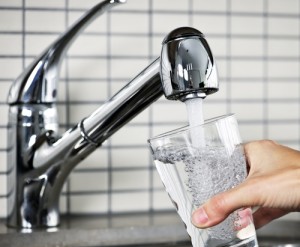The Flint, MI drinking water emergency goes well beyond political rhetoric. AquaNew extends its sentiments to those adversely impacted.
The U.S. EPA sets acceptable drinking water standards nationwide. In an effort to understand the facts behind this problem, we learned more by visiting both the U.S. EPA and other water technology websites. We understand that the drinking water leaving the municipal plant in Flint, MI was corrosive (below 7.0 pH units) and attacked the interior surface of antiquated pipes with accumulated scale, releasing an unacceptable level of lead into the water. You can read about the preliminary recommendations of both the U.S. EPA and the Flint Safe Drinking Water Task Force HERE.
In addition to changing the source of water coming into the municipal plant located in Flint, samples of antiquated pipes may be exhumed and set up at the municipal plant, to test the effectiveness of a chemical corrosion treatment program (orthophosphate dosing) that provides a protective layer on the accumulated scale of pipes (or formation of a low-solubility lead-phosphate complexes on interior pipe surfaces). The protective layer acts as a barrier to corrosion, reducing the dissolution of lead into the water. Other alternatives for the pipes may include either replacing them or coating them with an epoxy liner (which is likely cost prohibitive). Unfortunately, the Flint problem also can be a chronic problem for other metropolitan areas throughout our nation.
Emergency preparedness guidelines issued by the U.S. Department of Homeland Security (DHS) recommend that all households maintain an emergency supply of water – at least one gallon per person per day for three days – for drinking, cooking, and personal hygiene. The DHS guidelines specifically recommend that consumers purchase commercially bottled water. See more HERE. AquaNew recommends that you buy the purest water that you can get your hands on.

